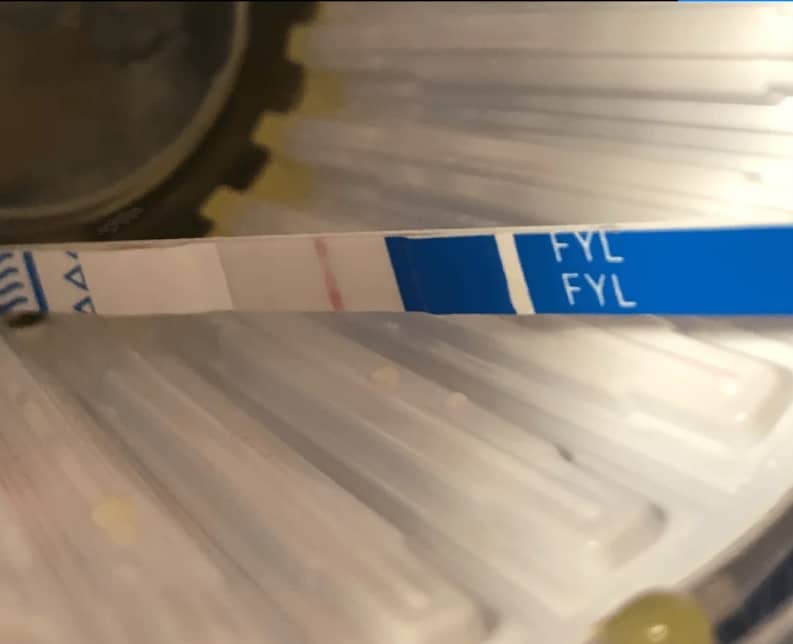
Fentanyl shows up as Fentanyl on a standard point of care drug test cup that includes fentanyl as a drug of abuse. The most common metabolites tested for are fentanyl and norfentanyl, which are combined as the assays on the same strip.
Not all drug tests include panels for fentanyl. The standard 12 panel drug test does not usually include fentanyl because it’s not CLIA waived. However, healthcare providers, probation officers, and addiction treatment facilities will often subsidize their rapid urine tests with a specialized fentanyl test strip.
Fentanyl does not show up on drug tests for opiates, oxycodone, or morphine. These were previously the most common tests used for opiate users. Since the illegal drug supply has largely ben supplanted by fentanyl, it’s important for professionals to include either laboratory testing or a preliminary forensic test for fentanyl to identify illegal drug use.
Laboratories have made fentanyl and norfentanyl part of their standard testing. Any drug test that is sent to a lab will be tested for fentanyl. The cutoff levels for laboratory testing vary, but are most often between 1-10ng/ml.
How Long Does Fentanyl Stay in Your System
The cutoff level for fentanyl tests varies. Our fentanyl test strips have a 10ng/ml cutoff level for fentanyl, but also feature a 0.5ng/ml cutoff level for fentanyl. The potency of street fentanyl has increased in recent years. detection times have increased along with it from 2-7 days up to 30 days for even recreational use of small amounts.
Due to the sensitivity required to detect such a powerful drug, fentanyl tests are not currently CLIA waived. They also test positive for a much longer detection period because of potency increasing after tests were developed.
Fentanyl is largely metabolized into norfentanyl in the human body. It is converted by CYP3A4-mediated N-dealkylation.
What Other Fentanyl Analogues Can Be Detected With Drug Testing
Lab drug tests can test for numerous fentanyl analogues. These include:
- Fentanyl
- Carfentanyl
- Acetyl fentanyl
- Norfentanyl
- Methoxyacetyl fentanyl
- Tetrahydrofuranyl fentanyl
- Acryl fentanyl
- Fluorofentanyl
- Furanyl fentanyl
- Isobutyryl fentanyl
- Butyryl fentanyl
- Valeryl fentanyl
Less than 1% of fentanyl is metabolized into despropionylfentanyl, hydroxyfentanyl and hydroxynorfentanyl. These are not considered clinically relevant.
Dangers of Fentanyl Abuse
Fentanyl, a potent synthetic opioid, poses a grave danger to individuals and communities due to its high potency. As a drug that is up to 100 times more powerful than morphine, even minute amounts of fentanyl can lead to lethal consequences. Its rapid onset of action and intensity make it particularly dangerous, often leading to severe respiratory depression and potential overdose within moments of ingestion.
Furthermore, fentanyl’s illicit distribution and mixing with other substances, such as heroin or cocaine, result in unpredictably potent combinations that heighten the risk of fatal outcomes. The allure of its quick and intense effects contributes to the troubling surge in fentanyl-related fatalities, making it a significant public health concern.
Drug dealers often press fentanyl into pills that resemble oxycodone and xanax. This phenomena poses additional risks to drug users who believe that they are purchasing safer pharmaceutical drugs.
Fentanyl’s chemical structure and mode of action differ from other opioids, complicating treatment and overdose reversal efforts. Standard doses of opioid-reversal medications, such as naloxone, might prove insufficient in countering fentanyl’s effects. This intricate response has created challenges for first responders and healthcare providers, who must remain vigilant and adaptable in their approach to combating fentanyl-related emergencies.
Public awareness campaigns must educate individuals about the perils of fentanyl use and its prevalence in street drugs. Enhanced drug testing protocols can assist in identifying fentanyl-laced substances, helping users make more informed decisions. Law enforcement efforts should focus on dismantling illegal fentanyl distribution networks and apprehending those responsible for its illicit production and trafficking. Simultaneously, healthcare professionals must receive specialized training in recognizing and treating fentanyl-related overdoses, equipping them with the knowledge and tools necessary for quick and effective intervention.
Where Can I Purchase Fentanyl Drug Tests?
You can purchase single panel fentanyl drug tests, or a forensic use only 14 panel drug test from Drug Test City. We recommend that professionals use our CLIA waived 12 panel drug test along with single panel fentanyl and alcohol strips. Insurance companies will only reimburse a CLIA compliant facility.
Our 14 panel test cup is ideal for anyone that needs tests for forensic use and do not include drug testing as an itemized charge during treatment.
Fentanyl tests may become CLIA waived in the future. As soon as a CLIA waived fentanyl test is available we will offer it due to the evolving nature of drug use in America.







